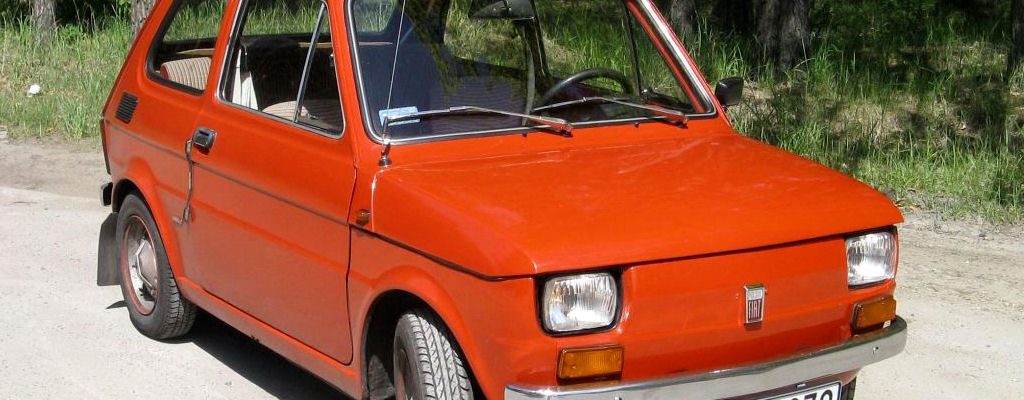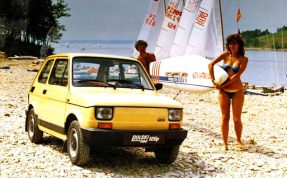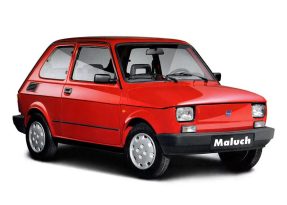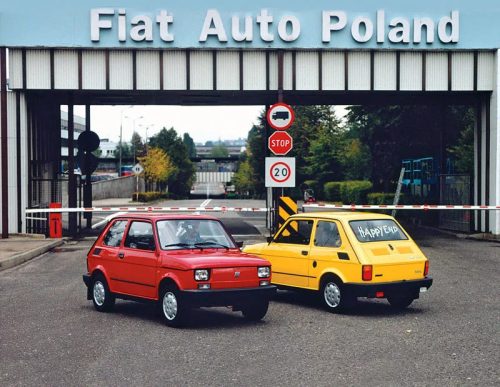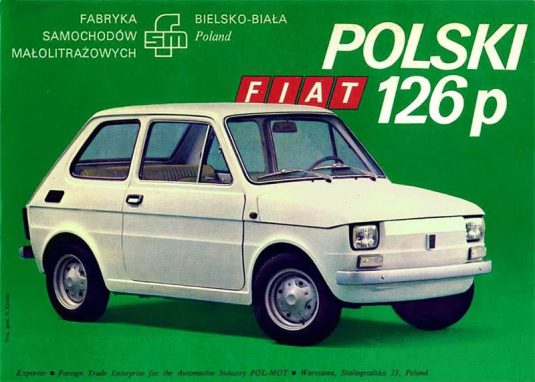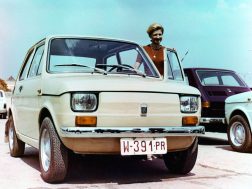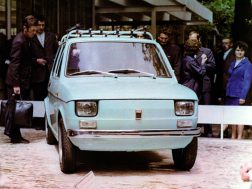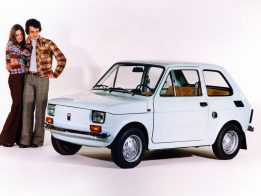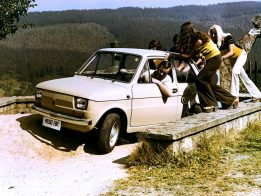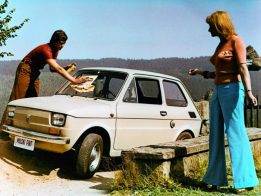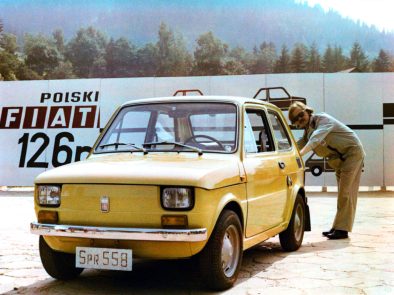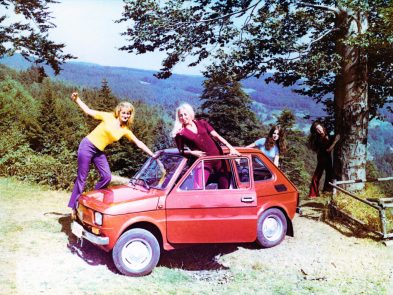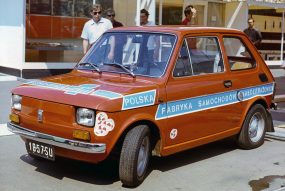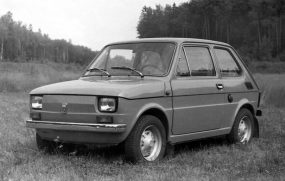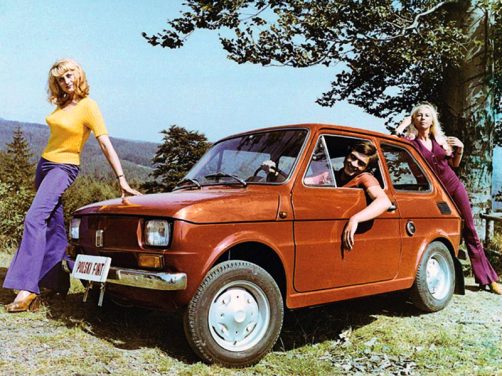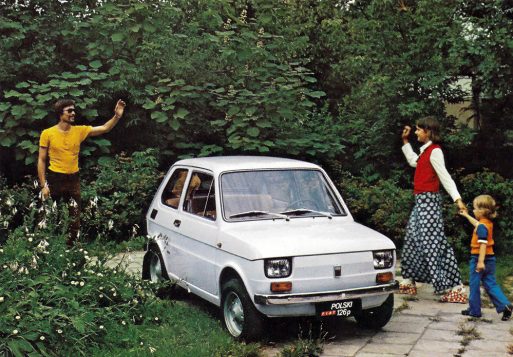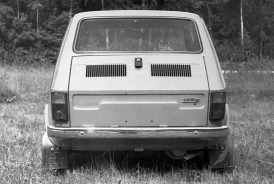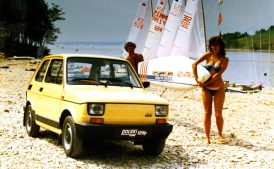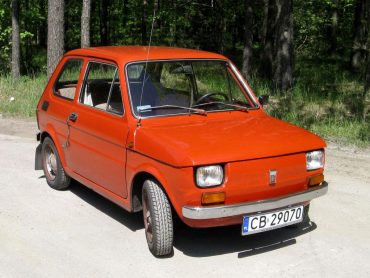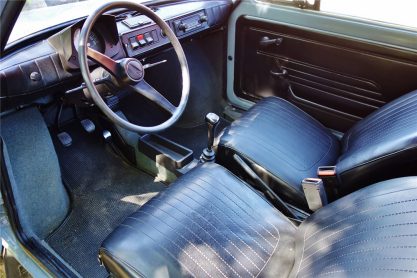Fiat 126p
The Fiat 126p, the first of which rolled off the assembly line on June 6, 1973, was a fixture on the streets of socialist Poland. The small car of Italian origin survived the fall of the communist regime and was produced at the factory in the southern Polish city of Bielsko-Biala until September 2000.
The Fiat 126 followed the Italian car Fiat 500, which was born in the mid-1950s as an alternative to the Vespa scooter on four wheels, not only in terms of dimensions, but also in terms of technical concept. Like the 500, the car was eight centimeters longer and much more angular, with an air-cooled two-cylinder engine at the rear that drove the rear wheels.
The car, which despite its miniature dimensions often replaced the function of a family car, is still remembered by many Poles with a certain nostalgia. There are more or less credible stories about how many passengers and how much cargo the Fiat could carry.
The original Fiat 126 was presented to the public for the first time at the Turin Motor Show in November 1972. A year and a month earlier, representatives of the Polish communist government had signed a licensing agreement, which was definitely not a step into the void. Fiats licensed in Poland (as well as in a number of other countries, including Czechoslovakia) had already been produced between the world wars, and the larger Fiat 125p had been produced in the country since the 1960s.
Warsaw was interested in the car license with the aim of increasing the industrial production of the country and raising the standard of living of the inhabitants. The fact that the expansion of the production line in Bielsko-Bialé and the construction of a factory in the city of Tychy was one of the largest investments in Poland in the 1970s proves that the communists led by Edward Gierk had big plans for the small car. However, the first Fiat 126p was assembled in Bielsko-Biala from Italian parts.
For a long time, Fabryka Samochodów Malolitražowych (or Small-Sized Car Factory in Czech) produced only the basic version, although it was gradually improved, for example with a slightly more powerful engine.
Only in the second half of the 80’s was the Bis version added, which had a hinged third door and a liquid-cooled engine, the convertible was rare, produced in five hundred copies. Other modifications, such as a van or station wagon, remained at the prototype stage, as did the attempt to equip the car with front-wheel drive.
As in other Eastern bloc countries, demand in Poland outstripped supply, and waiting times for cars were sometimes quite long.
“It was something unbelievable. The waiting lists filled up. The system worked in such a way that you first had to pay for the car and then wait for many months and sometimes years for a mysterious envelope with an invitation to pick it up,” recalled Stanislaw Uklanski, the editor of the Polish edition of the automotive magazine, a few years ago.
In Poland, the 126p was mainly called Maluch (Polish for “little one”) and achieved a comparable status and degree of distribution as the VW Beetle in the FRG, the Trabant in the GDR or the Citroën 2CV in France. Although these vehicles were produced in the Eastern Bloc, they were not available in the GDR. This variant also had a high degree of distribution on the Yugoslavian market, where it succeeded the Zastava 600/750/850 and was called Peglica (Serbo-Croatian for “little iron”).
